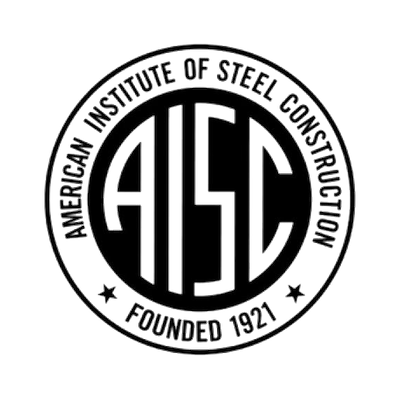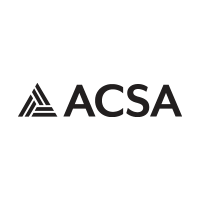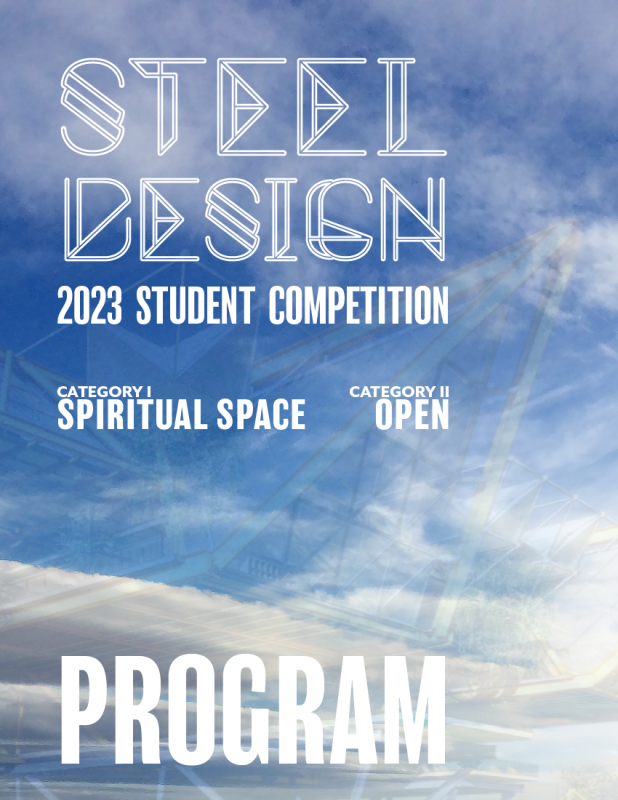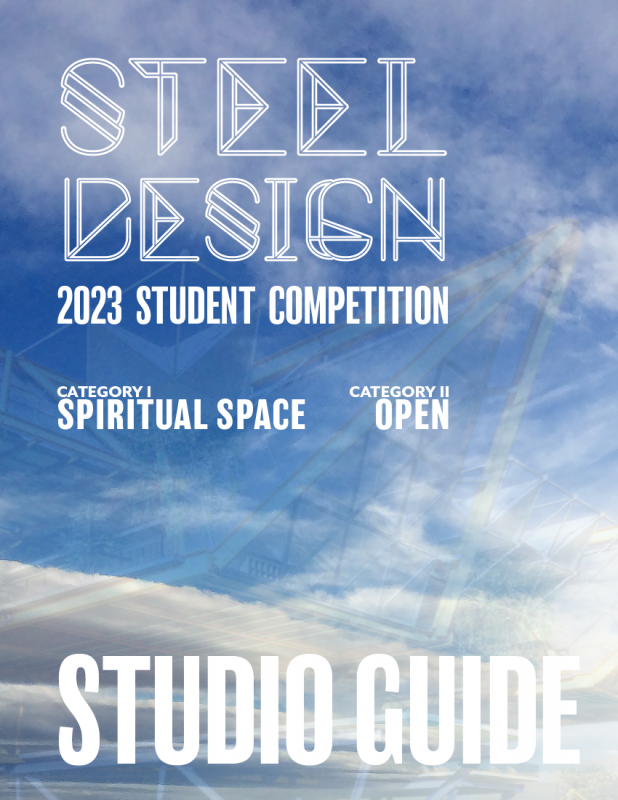The OPPORTUNITIES
Spiritual Space & Open
The 2023 Steel Design Student Competition will offer architecture students the opportunity to compete in two separate categories:
Design “A Place for the Spirit” on a campus, welcoming to all, where members of the campus community and visitors can learn about and express spirituality. Program spaces include places for worship, meditation, learning, and fellowship. Steel is the primary material.
Category II offers architecture students the opportunity to select a site and building program using steel as the primary material. This competition category permits the greatest amount of flexibility for any building type.
Students may not enter both categories of the competition.
About the Competition
The Association of Collegiate Schools of Architecture (ACSA) is pleased to announce the 23rd Annual Steel Design Student Competition for the 2022-2023 academic year. Administered by the Association of Collegiate Schools of Architecture (ACSA) and sponsored by the American Institute of Steel Construction (AISC), the program is intended to challenge undergraduate and graduate students, working individually or in teams, to explore a variety of design issues related to the use of steel in design and construction. Steel must be used as the primary structural material and contain at least one space that requires long-span steel structure, with special emphasis placed on innovation in steel design.
Awards + Recognition
The design jury will meet in Summer 2023 to select winning projects and honorable mentions. Winners and their faculty sponsors will be notified of the competition results directly. A list of winning projects will be posted on the ACSA web site and the AISC web site at www.aisc.org. Winning students and their faculty sponsors will receive cash prizes totaling $20,000 with distribution as follows:
$20,000
in cash prizes
Category I: Spiritual Space
Student(s) | Faculty Sponsor(s) | |
First Place | $4,000 USD | $1,500 USD |
Second Place | $2,000 USD | $1,000 USD |
Third Place | $1,000 USD | $500 USD |
Category II: Open
Student(s) | Faculty Sponsor(s) | |
First Place | $4,000 USD | $1,500 USD |
Second Place | $2,000 USD | $1,000 USD |
Third Place | $1,000 USD | $500 USD |
A limited number of honorable mentions may also be awarded at the jury’s discretion. Prize-winning submissions will be exhibited at the 2024 ACSA Annual Meeting and the 2024 AIA National Convention as well as published in a competition summary publication.
Advantages of Steel
Steel has a natural beauty that can be exposed to emphasize grace, slenderness and strength in space and form, as well as in building envelopes to enhance environmental performance and aesthetic character.
Resiliency
Structural steel offers a number of benefits in building design including the capacity to bear great loads in tension and compression, high resiliency and performance under harsh and difficult conditions, such as earthquakes and hurricanes, and the ability to span great distances with minimal material. Steel can be shaped by many processes, ranging from standard rolled sections to custom castings and digitally generated components. It can be prefabricated and delivered for site assembly, and it can be erected quickly under almost any weather condition to meet tight construction schedules.
Efficiency
Steel offers the greatest strength-to-weight ratio of structural materials. In addition, steel can be constructed quickly and for all project site types with the use of labor-saving prefabrication methods such as kit-of-parts, panelization, and modular construction. A building built with steel is potentially more flexible and adaptable to allow for a change in program, occupancy, and loading needs over time. Steel, if desired by the architect, can be graceful, nimble, and minimal in its bulk both in plan and section, and it integrates easily with other systems and materials.
Sustainability
Using steel is a highly sustainable option. The production of raw US structural steel involves in upwards of 93% recycled content, keeping your old cars and appliances out of landfills. At the end of a building’s life, 98% of all structural steel is recycled into new steel products, with no loss of its physical properties. As such, structural steel isn’t just recycled but “multi-cycled,” as it can be recycled over and over and over again. It is truly a cradle-to-cradle material, and few materials can claim that.
Steel Sustainability
Expression
Exposed and curved steel is an art, providing endless possibilities for architectural expression. Curved steel enhances the visibility of any building project – from the largest monumental project to that building down your street. Curved steel is one way to increase the design creativity of your next building project. And most importantly, curved steel is readily available nationally from a number of qualified AISC Associate Member Bender-Rollers. AISC information on curved steel: aisc.org/curvedsteel.
For more information, see the Supplemental Studio Guide.
Competition Organizers & Sponsors
Questions
Edwin Hernández
Programs Coordinator
ehernandez@acsa-arch.org
202.785.2324
Eric W. Ellis
Senior Director of Operations and Programs
eellis@acsa-arch.org
202-785-2324

 Study Architecture
Study Architecture  ProPEL
ProPEL 









